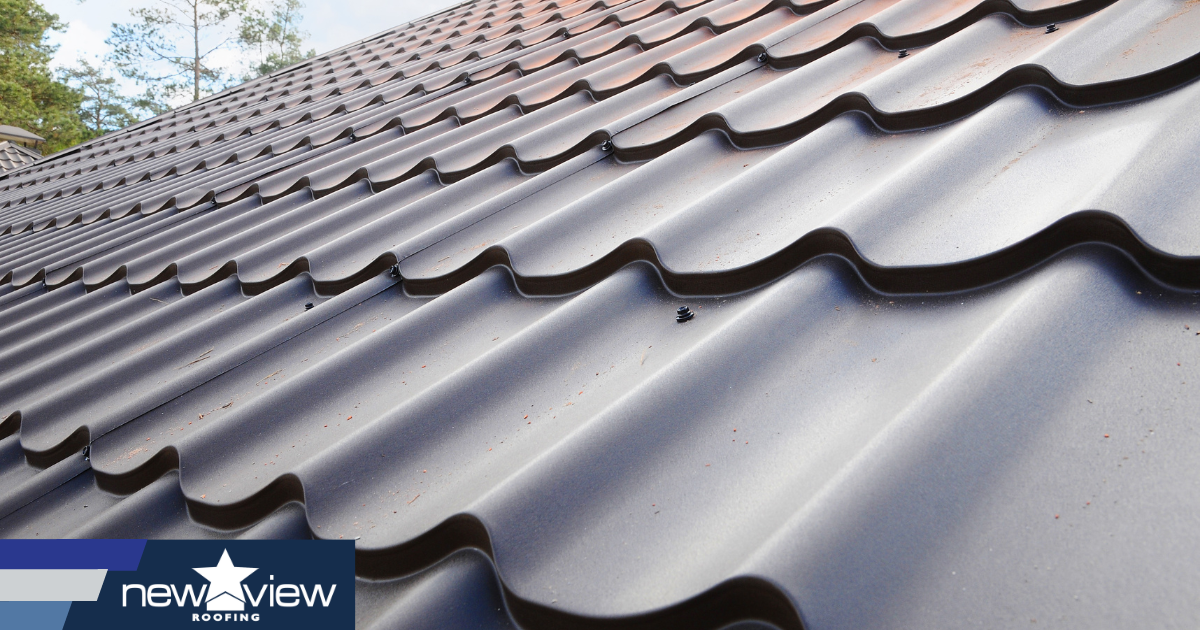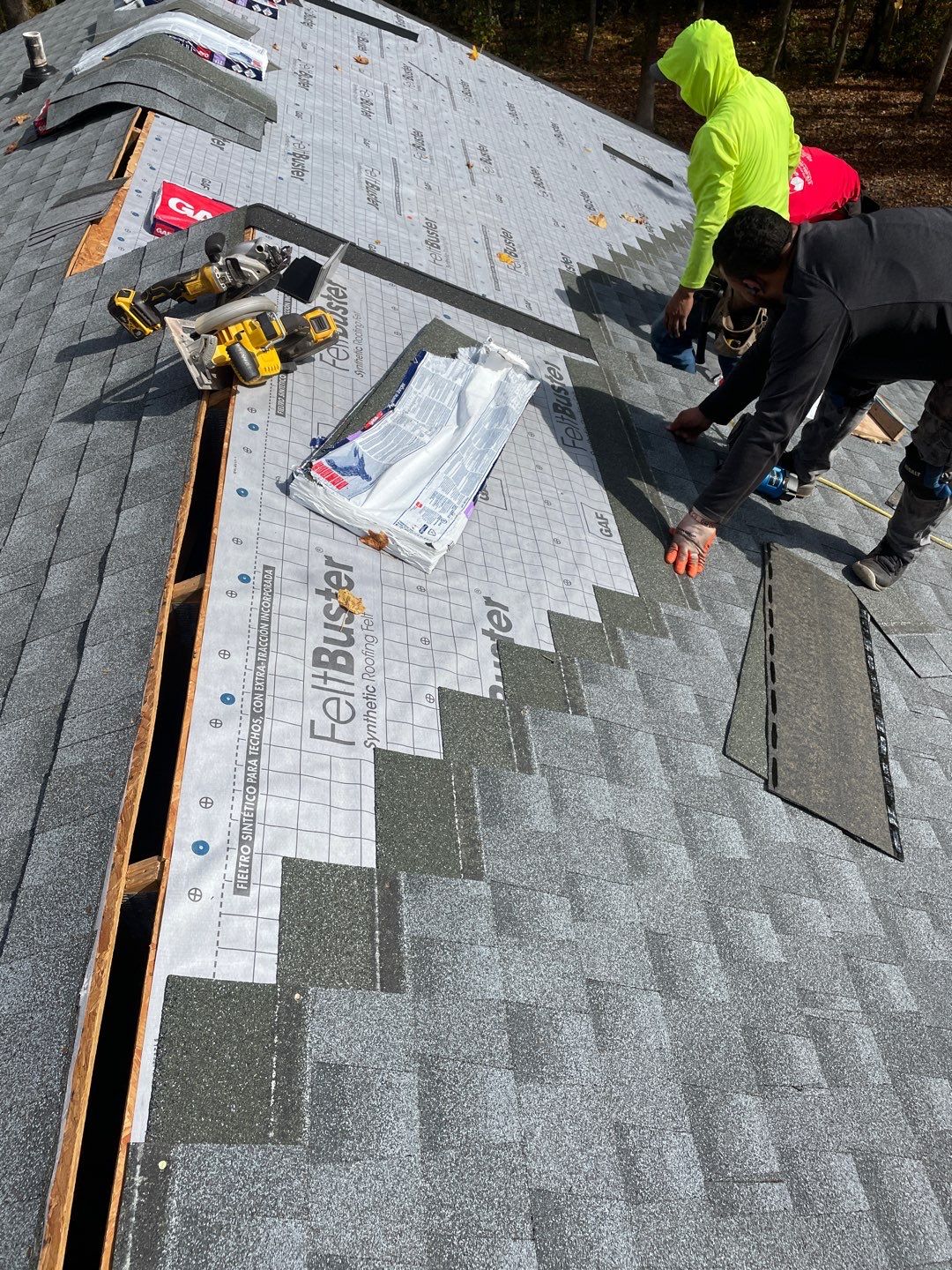How Gainesville Roofing Companies Can Transform Your Home's Outside
How Gainesville Roofing Companies Can Transform Your Home's Outside
Blog Article
Ideal Practices for Ensuring Proper Roof Covering Air Flow
Making certain correct roof ventilation is essential for the long life and performance of a roof. A well balanced consumption and exhaust vent proportion, frequently 1:300, plays a pivotal duty, with intake vents preferably put at the reduced side of the roofing system for amazing air access and exhaust vents at the peak for cozy air exit. Routine assessments to determine blockages and maintain clear air movement are critical. Additionally, keeping insulation away from vents is vital to avoid air movement limitation. Understanding these fundamental elements sets the phase for more in-depth insights into setup and maintenance methods that can substantially boost your roofing system's efficiency.
Understand Ventilation Fundamentals
Appropriately comprehending ventilation fundamentals is crucial for guaranteeing the longevity and efficiency of roof. Efficient air flow minimizes wetness accumulation and temperature extremes in the attic, both of which can lead to substantial architectural damages with time. A well-ventilated roof helps in preventing typical problems such as mold development, timber rot, and ice dams, which can compromise the stability of the roof materials and the underlying structures.
The primary goal of ventilation is to facilitate the movement of air, permitting a consistent exchange in between the exterior and indoor settings. This equilibrium is achieved with a combination of consumption and exhaust vents that interact to keep optimal airflow. Consumption vents, normally located along the eaves or soffits, allow fresh air to get in the attic room, while exhaust vents, often positioned at or near the roofing system ridge, enable hot, moist air to escape.
Trick variables affecting the effectiveness of roof covering air flow consist of proper positioning, ample sizing, and ensuring that both intake and exhaust vents are unobstructed. Regular inspection and upkeep are vital to recognize potential clogs, damage, or inefficiencies in the ventilation system, consequently safeguarding the roof's performance and sturdiness.
Kinds of Roofing Vents
Roofing vents play a vital role in keeping reliable attic room air flow and, by extension, the total wellness of the roof. Different kinds of roof vents are readily available, each with one-of-a-kind benefits tailored to details roofing requirements. Ridge vents, for instance, are set up along the roof covering's top, permitting cozy, damp air to get away from the attic room. They provide continual air flow and mix effortlessly with the roofline, making them both effective and visually pleasing.

Soffit vents are mounted under the eaves and operate in tandem with roofing vents to ensure a well balanced consumption and exhaust system. By enabling cooler air to enter from below, soffit vents assist in the expulsion of hot air via top vents. Gable vents, located on the outside walls of the attic room, offer one more reliable solution, especially in homes with gable roofs.
Assess Your Present Air Flow

Next, take into consideration the age and problem of your roof covering products and air flow parts. Older systems may not adhere to existing building codes or may have worn away in time, minimizing their effectiveness. Conduct an extensive examination to identify any type of indicators of deterioration, such as corrosion, damage, or spaces that can endanger the system's efficiency.
In addition, determine the attic temperature and humidity levels. High temperature levels and humidity can suggest poor air flow.
Installment Best Practices
Efficient installment of roof covering air flow systems is paramount for ensuring optimum performance and durability. Correct installation starts with comprehending the specific air flow needs of the roofing system and the structure it covers. This entails determining the correct proportion of intake to wear down vents, typically sticking to the 1:300 guideline, which specifies one square foot of ventilation for each 300 square feet of attic flooring space.

The placement of vents is similarly important. Intake vents should be installed at the roof covering's reduced side, usually in the soffits, to allow amazing air to go into. Exhaust vents, on the other hand, ought to be set up near or at the roof's top to assist in the leave of cozy, damp air. This produces an all-natural air flow that aids keep temperature and wetness equilibrium within the attic space.
Seal all vent connections meticulously to protect pop over here against air leakages and potential water seepage. Usage top notch materials and comply with manufacturer guidelines to make certain longevity and efficiency. Additionally, integrating ridge vents with baffles can significantly improve air flow effectiveness by avoiding wind-driven rainfall and snow from getting in the attic room.
Eventually, accurate installment of roofing air flow systems reduces possible issues such as mold growth, ice dams, and structural damage, ensuring the roof covering's stability and the structure's overall health.
Regular Maintenance Tips
Uniformity in upkeep practices is basic to making sure the long-lasting performance of roofing air flow systems. Throughout these inspections, guarantee that vents are free of debris, nests, and other obstructions that might hinder airflow.
Cleaning the vents is another essential task. Utilize a soft brush or a vacuum cleaner to get rid of dust and debris from intake and exhaust vents. Be mindful not to harm the air vent screens or louvers during the process. Furthermore, inspect the attic room space for any signs of water damage, which can jeopardize the integrity of the roofing system.
Appropriate insulation is equally important. Guarantee that attic insulation does not obstruct the vents, as this can drastically restrict air flow. Reposition or replace it to maintain an effective obstacle. if any kind of insulation has actually moved or worked out.
Finally, replace any type of damaged or missing parts without delay. Busted vents, fractured tiles, or tatty blinking can all contribute to insufficient air flow and must be resolved immediately. Regular upkeep ensures that the roof covering ventilation system works efficiently, thus extending the life-span of the roofing system itself.
Final Thought
Guaranteeing proper roof covering air flow is paramount for maintaining the effectiveness and longevity of a roofing system. Adherence to the 1:300 intake and exhaust air vent proportion, combined with the strategic positioning of vents, is important.
A balanced look here consumption and exhaust vent proportion, frequently 1:300, plays a critical duty, with intake vents preferably positioned at the lower edge of the roof covering for amazing air entrance and exhaust vents at the peak for cozy air departure. Consumption vents, normally located along the soffits or eaves, permit fresh air to enter the attic area, while exhaust vents, usually located at or near the roofing system ridge, enable hot, damp air to escape.
Soffit vents are set up under the eaves and work in tandem with roofing vents to guarantee a balanced intake and exhaust system. By permitting cooler air to go into from below, soffit vents assist in the expulsion of hot air via upper vents. Adherence to the 1:300 intake and exhaust vent ratio, coupled with the calculated positioning of vents, is necessary.
Report this page